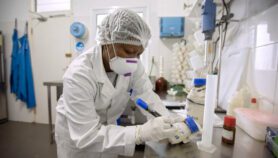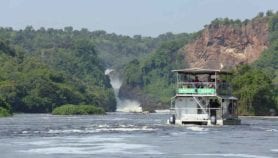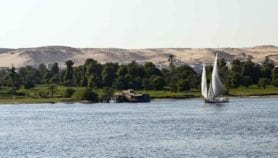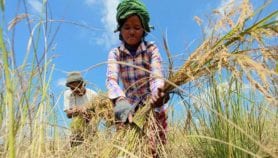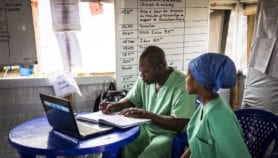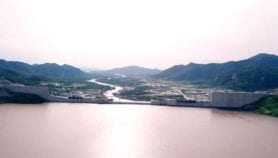By: T.V. Padma
Send to a friend
The details you provide on this page will not be used to send unsolicited email, and will not be sold to a 3rd party. See privacy policy.
[DELHI] The earthquake that killed an estimated 33,000 people in Pakistan and 1,300 in India on Saturday (8 October) has given India’s efforts to upgrade and link its earthquake monitoring stations fresh impetus.
The earthquake, which measured 7.6 on the Richter scale, came just three days after the 2005 World Disaster Report was published by the International Federation of Red Cross and Red Crescent Societies. The report called for better early warning systems, particularly in developing countries.
"The recent human tragedy witnessed in Pakistan and parts of Jammu and Kashmir on … shook the foundations of weak and dilapidated structures, and signalled the necessity for civil society to be armed with information to protect themselves," said Kapil Sibal, India’s science minister, in an article in The Financial Express.
India, whose inability to detect disasters in time to give adequate warnings was exposed by last year’s tsunami, is already taking steps to improve its data collection and analysis.
Just last week, the Indian Cabinet approved plans to set up a tsunami early-warning system by 2007. The system will use tsunami sensors in the Indian Ocean and a network of land-based earthquake monitoring stations (see India goes solo with tsunami-warning centre).
Upgrading earthquake monitoring stations
Vijay Prasad Dimri, director of National Geophysical Research Institute, told SciDev.Net that India would start upgrading 17 such stations within one month.
India will also set up new observatories in the Himalayan mountains, and use satellite data to monitor inaccessible terrain for signs of underground stresses building up, he said.
Saturday’s earthquake also highlights the need for India and Pakistan to share data. Scientific ties between the two countries, which have fought three wars since independence from Britain in 1947, have improved only in the past two years.
The lack of data from one country makes certain tasks, such as calculating the depth of the earthquake or the extent of the rupture, difficult, explains Baldev Raj Arora, director of the Wadia Institute of Himalayan Geology (WIHG) in Dehra Dun, India.
The institute has carried out preliminary analysis suggesting there will be more aftershocks in Pakistan as the rupture spreads to the west.
A quake-prone region
The 2500 kilometre-long ‘Himalayan arc’ running from Afghanistan to northeast India, is known to be vulnerable to earthquakes.
Here, a large piece of the Earth’s crust called the Indian plate pushes into the Asia plate, moving forward by five centimetres each year. The collision began 50 million years ago, giving rise to the Himalayas, and continues to cause underground stresses.
The region around Kashmir, which lies at the centre of last week’s earthquake, has witnessed at least 35 earthquakes, each measuring more than 7.0 on the Richter scale, in the past century. Kashmir itself, however, has until now been largely spared.
Lack of earth scientists
The recent natural disasters in India —four quakes and a tsunami in the past 12 years – have also highlighted the country’s lack of earth scientists (seeEarth sciences neglected in India, despite warnings).
"We need integrated and interdisciplinary studies to understand our earthquake sources," says Kusala Rajendran of the Centre for Earth Sciences in Thiruvananthapuram in southern India.
"Geologists, seismologists and engineers need to work together to understand the various source zones and what type of engineering practices should be followed."
Rajendran told SciDev.Net that monitoring earthquakes with better instruments is one thing, but believes field studies to map active faults and potential sources are just as important.
Read more about tsunamis in SciDev.Net’s Tsunami update.






